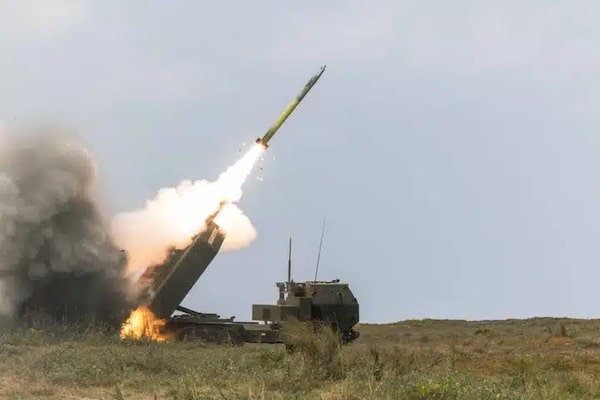Pentagon strategists have been beefing up their military presence in Asia and building alliances in preparation for an all-out war against China. In recent months Taiwan has increasingly come into focus as the likely excuse to justify a war as terrible—or worse–than any in modern history.
They want to use Taiwan as a tool to “manufacture consent.” But the island is important for more than just war propaganda. Pentagon planners are readying plans for control of areas of Asia and, in particular, the South China Sea that would be of value in war.
In early April, CNN reported that U.S. forces would now be allowed to rotate troops to nine military bases in the Philippines, including four new bases. Three of the four are within a few hundred miles of Taiwan and close to military defense locations of China’s People’s Liberation Army.
The Philippines bases would facilitate a takeover of the channel between northern Luzon and Taiwan—the area called the Bashi Channel. Control of Taiwan would be instrumental in moving into the South China Sea.
Only weeks after securing access to the bases, the U.S. conducted war exercises jointly with the Armed Forces of the Philippines (AFP). Annual Balikatan war exercises between the U.S. and the Philippines have been growing in size and scope in their decades-long history, and this was the largest ever, involving 17,600 troops—nearly double that in 2022.
More than 12,000 of the troops were from the U.S., a small number from Australia, and the remainder from the AFP. They used live ammunition, F-16 fighter jets, the F-35B stealth bomber, Patriot missile batteries, and Blackhawk and Chinook helicopters. They included amphibious landing practice, and targeted and sunk a decommissioned ship close to the South China Sea.
Balikatan 2023 was an open threat and practice for war against China.
In another signal of the heightened war danger, Philippines President Ferdinand Marcos Jr. followed up with an announcement that the AFP would join the U.S. in ongoing naval patrols of the South China Sea. Marcos’ father was a brutal U.S.-backed dictator who was driven into exile by an uprising of the Filipino people in 1986.
War budget, arms sales
On March 9, U.S. Secretary of Defense Lloyd Austin announced President Joe Biden’s proposed Fiscal Year 2024 Defense Budget of $842 billion—which is $26 billion more than 2023.
Describing Biden’s proposal, Austin said: “To sustain our military advantage over China, it makes major investments in integrated air and missile defenses and operational energy efficiency, as well as in our air dominance, our maritime dominance, and in munitions, including hypersonics.
This budget includes the largest ever request for the Pacific Deterrence Initiative, which we are using to invest in advanced capabilities, new operational concepts, and more resilient force posture in the Indo-Pacific region. It also enables groundbreaking posture initiatives in Guam, Mariana Islands, the Philippines, Japan, and Australia.
Separate from the proposed defense budget, the Biden administration has approved $19 billion in arm sales to Taiwan. Weapons makers are energetically pushing for more of that.
Defense News reported May 3,
A delegation of United States defense contractors and a former senior leader of the U.S. Marine Corps pledged the beginning of deeper cooperation with Taiwan.
Speaking at a public forum in Taiwan’s capital Taipei, retired Lt. Gen. Steven Rudder said the U.S. wants to be part of the defense capabilities of Taiwan and improve the supply chain resilience of the island. He also emphasized how critical the island’s position is for security.
Taiwan was already part of China more than a century before George Washington was elected the first president of the U.S. Its unwarranted recognition as a separate country only happened in 1949 when Chiang Kai-Shek, the nationalist leader who slaughtered hundreds of thousands of Mao Zedong’s revolutionary fighters beginning with the 1927 Shanghai Massacre, was finally chased out.
Chiang fled to Taiwan and was recognized by the imperialist powers of the U.S. and Britain as the legitimate government of China. Under pressure from the U.S., the United Nations didn’t even grant the People’s Republic of China a seat until 1971.
Since then, officially, the U.S. has adhered to the “One China” policy in recognition of the fact that Taiwan is part of China. The “Three Communiques” were mutually agreed on policies that the U.S. ostensibly accepted in exchange for the right to invest in China.
Two trends of thought have competed with each other among those billionaires who dominate U.S. policy toward China. There are those who want to maintain a stable profit-taking relationship.
But the spectacular successes of China in lifting more than 800 million people out of extreme poverty, China’s rise as a world scientific power, its global leadership in surviving the COVID-19 pandemic, and myriad other achievements have emboldened those capitalist rulers who want to destroy China.
The anti-imperialist movement is facing its greatest challenge in many decades. The proxy war against Russia and the growing momentum for war against China have to be seen as one. A powerful people’s movement that takes militant action against U.S. imperialism can and must block another calamitous war.

